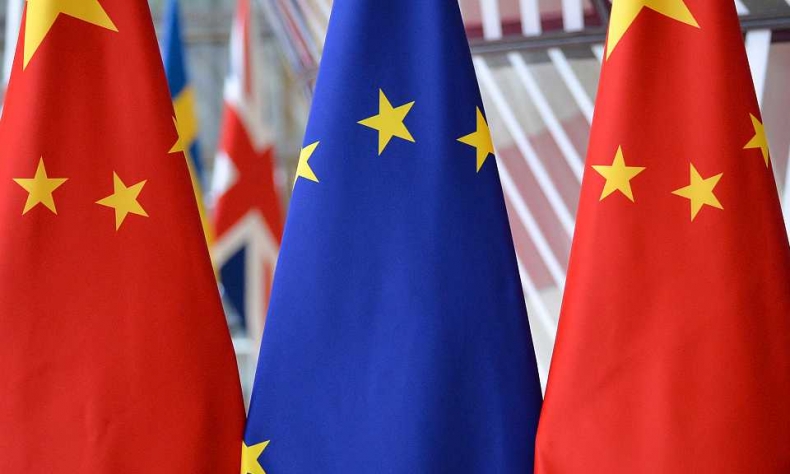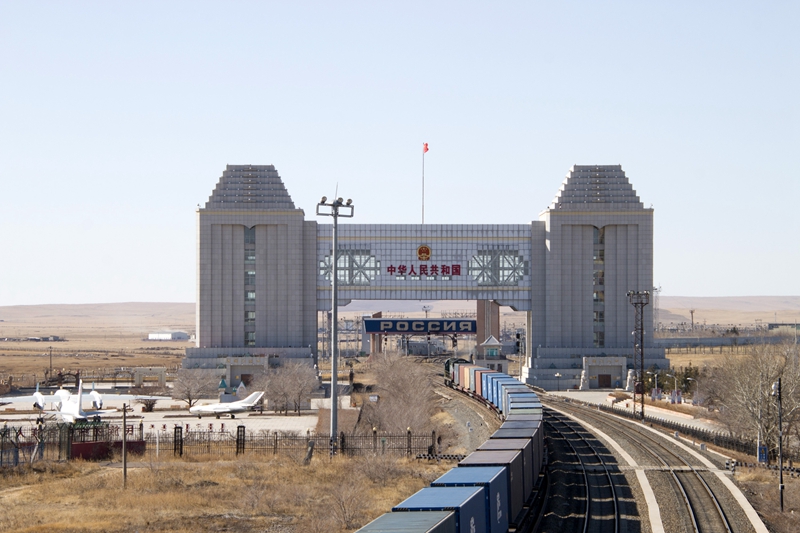A Decade of Dramatic Growth of China-Europe Cargo Rail Service

Increasing economic ties between Asia and Europe will be an irreversible trend on the world economic stage in decades to come.
Since the first China-Europe freight train left Chongqing for Duisburg, Germany, on March 19, 2011, the brand new service has been running across the wider Eurasia continent for more than one decade. The “caravans of steel camels” promote practical cooperation between China and countries along the route, sending a clear signal that the Belt and Road Initiative is an international public good, benefiting all those engaged in it.
Growth spurt
During the past 10 years, the China-Europe Railway Express has realized dramatic improvements. It has covered over 60 Chinese cities and 21 European countries, including Germany, Poland, Belgium, France and the Netherlands, among others. In 2020, the total number of train trips reached 12,400, a 50-percent rise compared with the last year, and up sevenfold since 2016, while the total number of trips stood at less than 20 in 2011.
The growth rate in 2020 was an unprecedented one in the span of a decade, demonstrating that the benefits of the service have been widely acknowledged by companies across China and Europe. The China-Europe Railway Express currently contributes 5-6 percent to total transport capacity between Asia and Europe. It also represents the rejuvenation of the ancient Silk Road, the bridge for the exchange of goods and culture in times long gone, having lost its momentum after Europe entered the Age of Exploration in the 15th century.
Moreover, the China-Europe Railway Express has gradually become a topnotch cost-efficient freight transport method between Asia and Europe. In its earliest stages, many refused to believe that a trans-continental railway would have any kind of future because first, its freight rates are more expensive than those of sea transportation, and second, railway transportation takes more time compared with air services. Nevertheless, these differences came with their individual advantages. Time-wise, the China-Europe Railway Express comes to one third of sea freight, and price-wise, rail transport comes to one third of air freight.
China-Europe freight trains provide a successful way of transportation for China’s inland regions such as Chongqing Municipality, Sichuan and Hubei provinces, and Xinjiang Uygur Autonomous Region, as well as countries in Central Asia and East Europe, helping them access the West European market, promoting the economic ties between those regions. For example, imports take only one month to arrive in Chongqing from Spain via train, 50 days shorter than the sea shipping route which suffers delays due to the pandemic.
Ever since the COVID-19 pandemic took the world hostage, both air and sea transportation activities have at least encountered some level of supply disruption and their service rates have dramatically increased. Subsequently, the situation at hand ups the allure and advantages of the China-Europe Railway Express. A number of export logistical service agencies in Chinese coastal cities said some of their clients were shifting to rail transport.
If the blockage of the Suez Canal in late March has taught us anything, it’s that sea transportation, too, can encounter uncontrollable risks, not only delaying those shipments by more than 15 days, but also increasing company costs in terms of time and capital with the possibility of further price hikes.
Fighting the pandemic
Moreover, China-Europe freight trains also play an important role in the battle against COVID-19 across Europe.
On one hand, they have transported vast amounts of medical supplies ever since COVID-19 broke out in many countries. As of May, more than 27,000 tons of medical equipment, including masks and protective suits, have been delivered to Europe courtesy of railway transportation. A number of Chinese cities, too, have chartered trains to transport virus control resources to European countries.
On the other hand, whereas air and sea transport suffered the impact of the pandemic, the China-Europe Railway Express provided a huge logistical boost to supply chain stability and economic recovery. For example, many countries in Europe and Eurasia saw a rise in the demand for electronic products and office supplies due to increasing remote work and distance learning brought on by lockdown policies. The freight trains helped deliver China-made stuff to European consumers in a timely manner.

Mutual benefits
The China-Europe Railway Express is also a two-way trade route, opening the opportunities of export to the huge Chinese market. As Chinese consumers today have more and more demand for high-quality foreign goods, especially food items, exporters along the route could tap into the new market potential.
The freight trains have transported foreign products all the way to inland cities such as Zhengzhou in Henan Province, Wuhan in Hubei Province, and Chongqing. Advanced refrigerated containers are used to preserve imported foods to their freshest standards.
At present, the agreement between China and the EU on geographical indications has entered into force, with authentic products from both sides to receive protection in each other’s markets and more consumer acknowledgement. The China-Europe Railway Express business can grow from these growing needs.
In addition, the railway service features adequate potential for improvement. Since the green and digital transitions have become the main trend of economic development worldwide, it can also tap into the power of technology. For instance, blockchain technology is being used in the services of the China-Europe Railway Express. The Industrial and Commercial Bank of China has launched a blockchain platform in order to help trade companies secure loans directly from it, facilitating their business and turnover of capital.
The intermodal transport document has replaced the traditional waybill for saving time on the procedures of customs clearance and delivery, and has been widely accepted by companies and customs authorities. Enterprises can use one document to manage all the requirements of each country along the route.
Some observers have pointed out that the China-Europe Railway Express could potentially be the least environmentally damaging method of long-distance cargo transport. The EU has paid attention to the potential of cutting greenhouse gas emissions in the transport sector through promoting railway delivery. China and the EU may find more cooperation space in the field of rail transportation.
More and more international enterprises are viewing the China-Europe Railway Express as a golden opportunity. DHL expects that the service will move to the global forefront of logistics options and achieve an unprecedented position in the transportation sector. Nippon Express has integrated the railway express with its own business. The Japanese logistics enterprise is shifting its focus to railway and most recently announced its plans to increase rail services connecting China and Europe, with plans to launch a new railway route connecting Suzhou in Jiangsu Province with a host of European cities such as the Polish hub of Malaszewicze and the German nodes Hamburg and Duisburg.
The China-Europe Railway Express has attained enormous improvements on several fronts in its first decade of existence. After the pandemic, it must home in on its market segment, providing power to Chinese inland cities and Eurasian countries to participate in the international supply chain. Increasing economic ties between Asia and Europe will be an irreversible trend on the world economic stage in decades to come. These caravans of steel camels will bring back the long-gone glory of the Silk Road to our modern-day age.
Dong Yifan is an assistant research fellow with the China Institutes of Contemporary International Relations.
 Facebook
Facebook
 Twitter
Twitter
 Linkedin
Linkedin
 Google +
Google +










